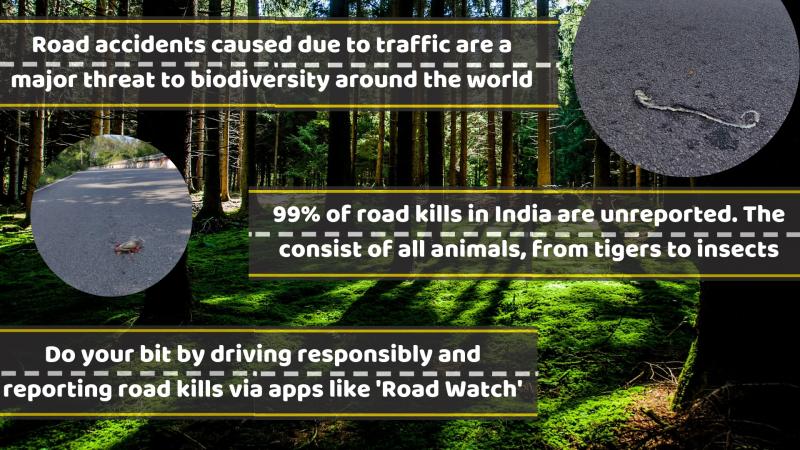
“Ecology is boring for the same reason that destruction is fun”, said Don DeLillo, an American novelist and playwright. This saying resonates very well with road ecology. Road kills are soon forgotten till the next one happens, reckless driving in protected areas is ubiquitous and polluting ecologically sensitive area is an act of no shame. And, this is not fun!
Linear structures like roads, railways and power lines are crucial for a country’s development. But, how does that affect ecology? The new discipline of road ecology studies both the positive and negative effects of roads, on the environment. Major roads that pass through forests and protected areas are not only a threat to flora and fauna, but also disturb the water cycle. Water and snow run off the road surfaces picking up motor oil, gasoline and heavy metals on the way, thus causing \pollution of water bodies in the surroundings.
The other issue is with the traffic plying on these roads, which move throughout the day and night, with very few parks restricting their entry from late evening to early morning to safeguard the nocturnal animals. There exists a national wildlife action plan of 2002-2016 that recognises the peaceful life for nocturnal animals in a protected area away from sound and light disturbance of automobiles. However, seldom are they enforced.
Other than the passage of transport vehicles, some parts of the protected areas and forests are flooded with pilgrims during certain days of the year due to the religious importance of shrines and temples inside them. One such example is Sabarimala temple located in Periyar Tiger Reserve of Kerala. From November to January, around 100 million people visit this temple and take a holy dip in river Pamba, thus polluting it and causing massive damage to the forests.
The ideological conflict between humans and wildlife is visible on the roads of India. If no measures are taken to save the remaining 4% of protected areas, we may be paying a massive price in the name of development.





